
Discovering the floating villages of Tonlé Sap lake, Cambodia
Located just a few dozen kilometers south of Siem Reap, Tonlé Sap Lake is a must-visit destination. Not only does it harbor a unique ecosystem, but it is also home to numerous inhabitants who have adapted to life on water, living in harmony with the changing seasons. Let's explore the floating villages of Tonlé Sap.
What you need to know about Tonlé Sap lake
Southeast Asia’s largest freshwater body
Situated approximately 15 km south of Siem Reap, Tonlé Sap, meaning "Great Freshwater River" in Khmer, is the largest freshwater lake in Southeast Asia. Its size varies with the seasons.
During the monsoon, the Mekong River's increased flow leads to a rare phenomenon: the reversal of the Tonlé Sap River's current. Consequently, the lake fills up, expanding its surface area from 3,000 km² during the dry season (November to May) to 13,000 km² during the rainy season (June to November).
A biosphere reserve
Tonlé Sap Lake boasts a rich ecosystem, hosting over 100 species of aquatic birds (such as storks, pelicans, and herons), 300 species of freshwater fish, and numerous other animals (including snakes, turtles, and crocodiles). This biodiversity led to its designation as a UNESCO Biosphere Reserve in 1997.
One of the world's most productive fishing zones
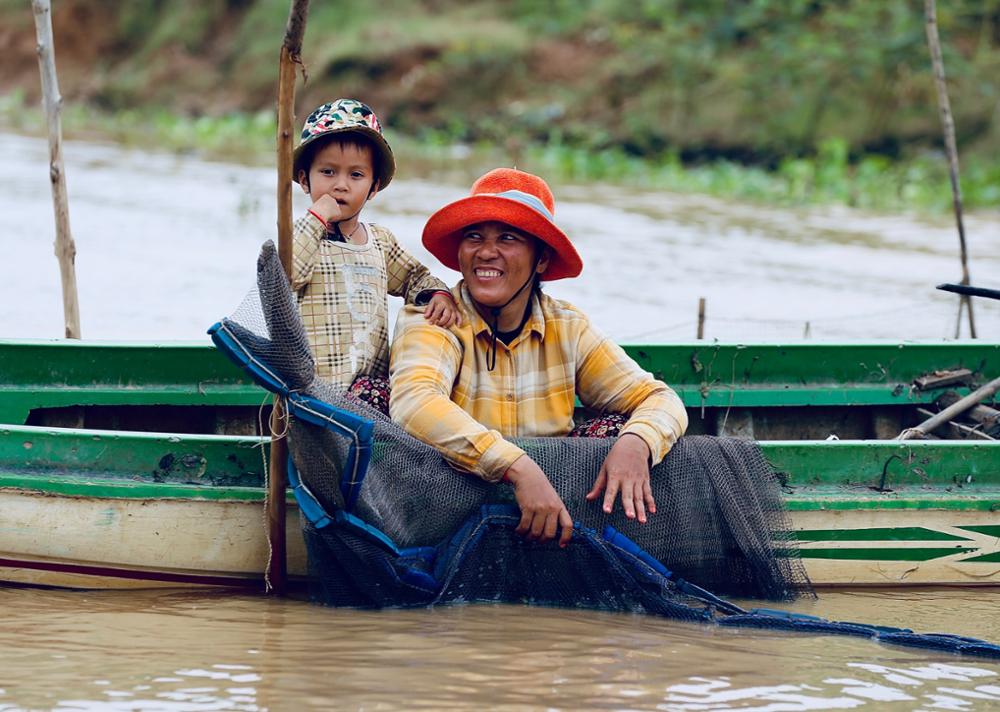
The majority of Tonlé Sap's inhabitants rely on fishing and agriculture for their livelihoods. The lake is considered one of the most productive fishing zones globally, supplying over 75% of Cambodia's annual freshwater fish catch and nearly 60% of the country's food. As the rainy season transitions to the dry season, receding waters deposit sediments, making the land fertile for agriculture.
The inhabitants of Tonlé Sap lake
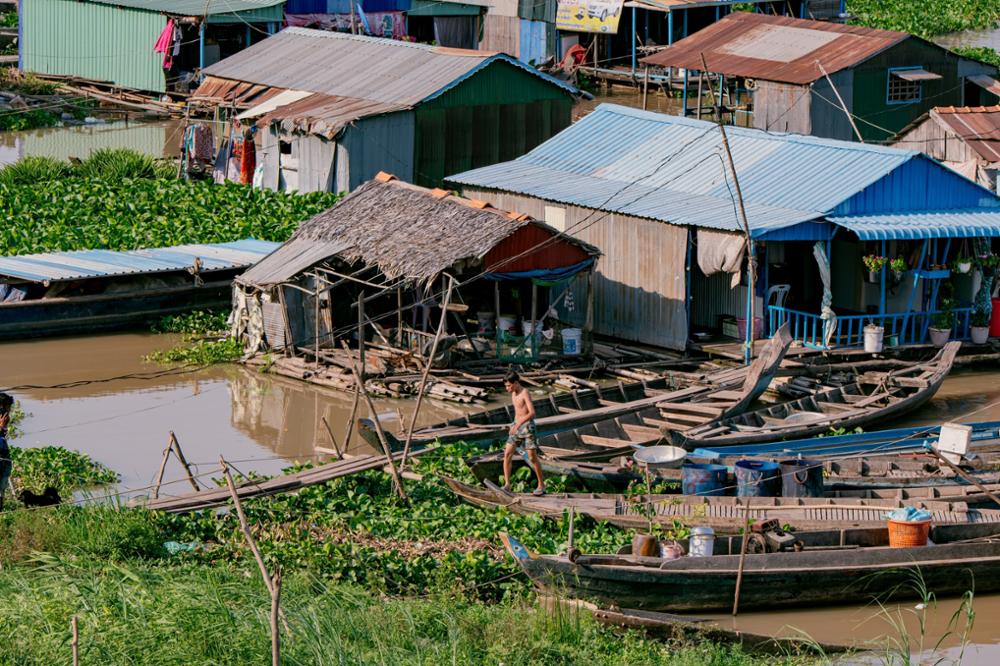
With such abundant natural resources, the lake's shores have been inhabited for centuries. To adapt to seasonal floods, residents have constructed ingenious habitats that move with the water: floating villages and stilted houses. Today, over 3 million people live around Tonlé Sap Lake, including Cambodians, Khmers, and a significant Vietnamese population.
Threats facing the lake
Despite its ecological and economic importance, Tonlé Sap Lake faces several threats, including the construction of hydroelectric dams, climate change, and overfishing
Floating villages to explore around Tonlé Sap
Here are the main floating villages to visit around Tonlé Sap:
Chong Khneas
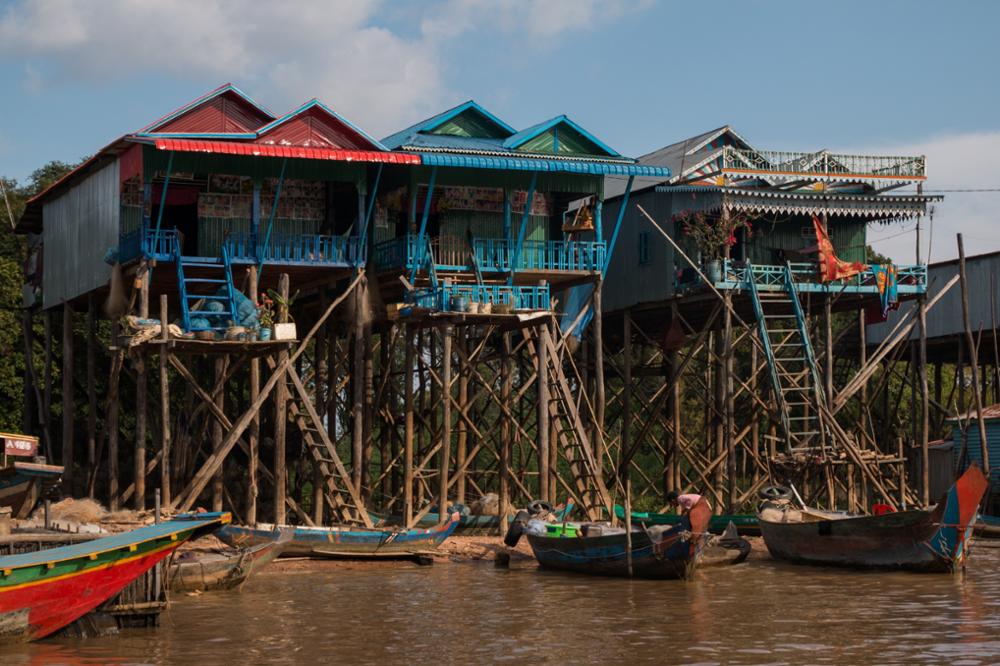
Located just 15 km from Siem Reap, Chong Khneas is the most accessible floating village on the lake. It's also the most popular and frequently visited by tourists. The village features colorful stilted houses inhabited by Khmers, Muslims, and Vietnamese.
Visitors can see various floating infrastructures, such as schools, clinics, sports fields, and shops. There's also a fish farm and the Gecko Environmental Center, which aims to raise community awareness about environmental conservation.
Prek Toal
Situated in the far northwest of Tonlé Sap Lake, Prek Toal is one of the region's must-visit floating villages. It lies within one of the three major zones of the Tonlé Sap Biosphere Reserve and is home to a significant bird sanctuary.
Over 100 bird species have been recorded here, including endemic and rare species like the giant ibis, the rare marabou stork, storks, pelicans, and cormorants. Additionally, the area is home to the world's smallest primate, the slow loris.
To explore this enchanting area, it's recommended to go with a local guide and choose an ecotourism circuit with the NGO Osmose. Visitors can stay with locals, visit villages, observe water hyacinth weaving techniques, and birdwatch with an experienced guide.
Note:
Accessing Prek Toal and the bird sanctuary requires an entry fee paid to the Wildlife Conservation Society. Some tours include this fee in their packages.
Kampong Phluk
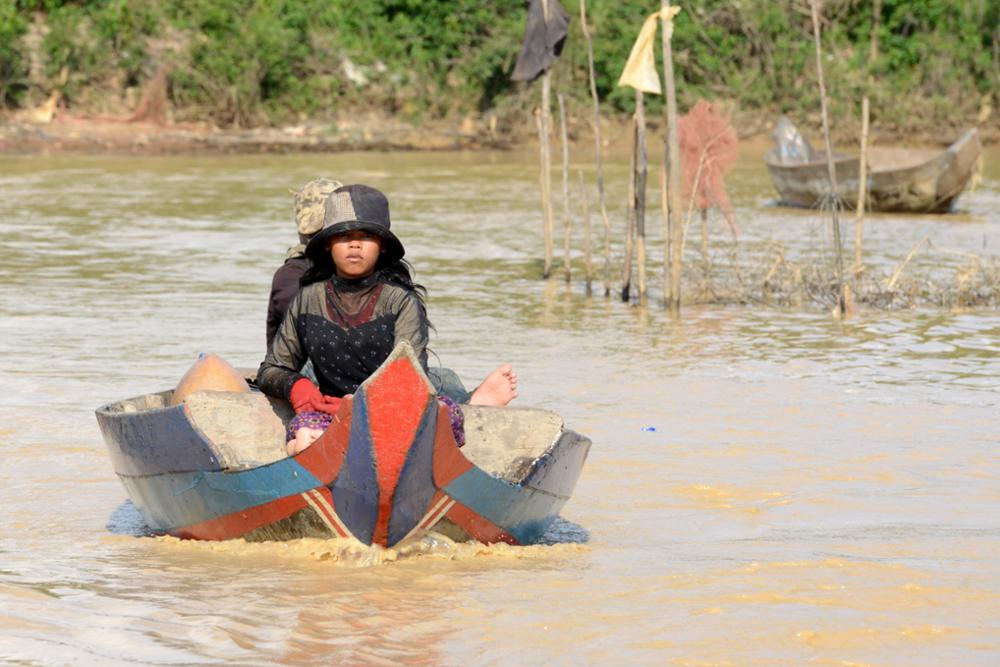
Head to the northeastern shores of Tonlé Sap Lake, about 30 km from Siem Reap, to discover Kampong Phluk. This small village is predominantly inhabited by Khmers.
Unlike other floating villages, Kampong Phluk is a stilted village. Its houses are built on stilts 6 to 10 meters high, giving the impression that they float during the rainy season and are visible during the dry season. During this time, it's possible to visit the village on foot without taking a boat.
Less touristy and more authentic than other villages, Kampong Phluk is surrounded by submerged mangrove forests, which can be explored by boat during the rainy season. Keep an eye out for various birds and monkeys.
Kampong Khleang
Located about 20 km from Kampong Phluk and 55 km from Siem Reap, Kampong Khleang is the largest community on Tonlé Sap Lake. The village features stilted houses, schools, clinics, pagodas, shops, and more.
The community-based system in the village allows residents to benefit from tourism revenues. Boat services are entirely owned and managed by locals, ensuring that the money spent directly supports the community.
Due to its more remote location, Kampong Khleang is less frequented, making it ideal for those seeking a tranquil floating village experience.
Mechrey
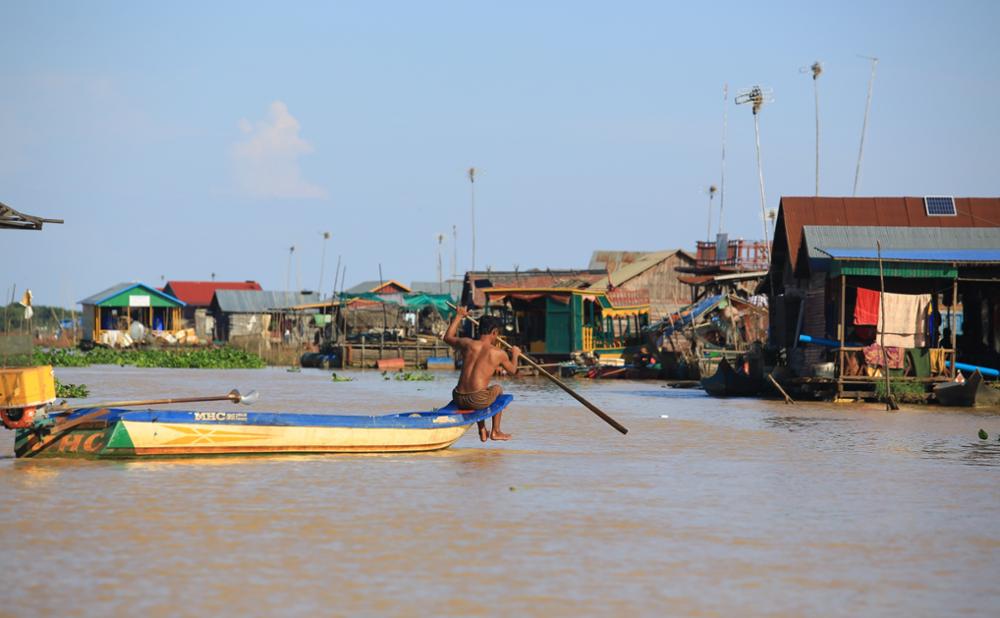
Also situated on the northeastern shore of Tonlé Sap Lake, near the Prek Toal bird sanctuary, Mechrey is the newest floating village in the region. It features typical floating village infrastructures: stilted houses, schools, clinics, shops, and fish farms.
Similar to Kampong Khleang, Mechrey is managed by local communities. Paying for boat services helps fund local facilities and services, supporting community development.
Kampong Luong
Located about 40 km from Pursat on the southern shores of Tonlé Sap Lake, Kampong Luong is the most distant floating village from Siem Reap. Due to its remote location, few travelers venture there, making it one of the most authentic floating villages in the region.
The village is socially diverse, with Khmers, Chams, and Vietnamese residents. Infrastructures include stilted and floating houses, schools, markets, restaurants, shops, a church, a pagoda, a gas station, and a fish preservation plant.
While not the most accessible, Kampong Luong is ideal for those wishing to explore off-the-beaten-path destinations and avoid more touristy floating villages.
Beware of scams in Tonlé Sap's floating villages
Numerous tourist scams are reported annually in Tonlé Sap's floating villages. Common scams include :
The imposed guide scam :
An "unofficial guide" may board your boat once you're on the water, requesting an additional fee for their services. While you can accept their services, be aware that they often speak little English. If you decline, the boat captain might shorten your excursion.
To avoid these situations, consider hiring a certified local guide in advance. If you prefer not to have a guide, the Cambodian Tourism Office recommends showing this letter written in Khmer before boarding the boat:
« សុំទោសលោកអ្នក
ខ្ញុំមិនត្រូវការមគ្គុទ្ទេសន៏ ឬអ្នកនាំផ្លូវនៅលើទូកនេះទេ ។ ខ្ញុំគ្រាន់តែចង់ជិះទូកលេង ។ ប្រសិនបើលោកអ្នកមិនគោរពការសំរេចចិត្តរបស់ខ្ញុំទេ ខ្ញុំមានសិទ្ធផ្តល់ក្រុមហ៊ុន ស៊ូជីញ និងរាយការណ៏ទៅក្រសួងទេសចរណ៏ ។
អគុណដែលបានអាននិងយល់ពីតំរូវការរបស់ខ្ញុំ »
Translation in English:
"Dear Sir,
We do not want a guide or any additional services beyond the planned boat ride. If you do not respect this and try to impose extra services, we will report you to the Ministry of Tourism, the port authority, and the boat rental company.
Thank you for your understanding."
The rice for children scam:
During your visit, you may be persistently encouraged to purchase a bag of rice for $25 or $30 USD (or even more) to donate to underprivileged families or children (at a school or orphanage). However, these bags are never actually opened—they are simply resold to the next group of tourists.
How to avoid this? Once again, having a certified local guide with you can help prevent this type of situation. Alternatively, you can simply say that you don’t have any cash with you. If you genuinely wish to support the local communities, the best way to do so is by purchasing goods directly from local shops and restaurants.
How to get to Tonlé Sap lake
The easiest way to reach the floating villages is to depart from Siem Reap. Transportation options include tuk-tuks, taxis, or minivans. The journey to the lake offers a scenic view of the Cambodian countryside before you arrive at one of the lake’s embarkation points, where a traditional wooden boat (pirogue) will take you to the village of your choice.
When is the best time to explore the floating villages?
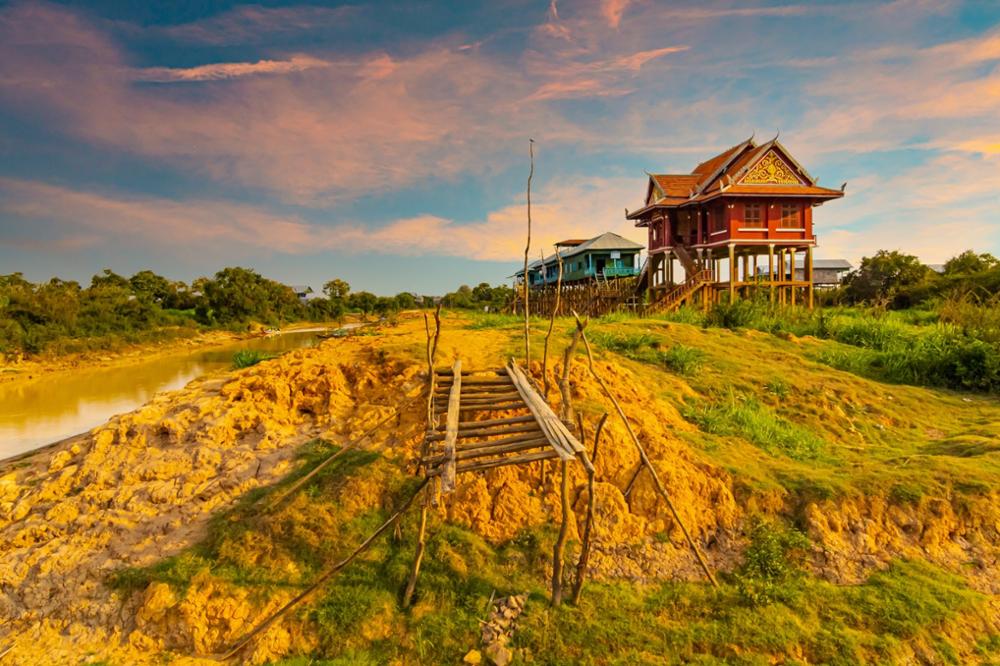
The best time to visit the floating villages of Tonlé Sap is during the rainy season, from June to November. Water levels are higher, making boat navigation easier and offering a more immersive experience of life on the water. The landscapes are lush, and the lake is at its most scenic.
Good to know:
In the month of November (during the full moon), Cambodians celebrate Bon Om Touk, better known as the Water Festival. It is one of the most important festivals in Cambodia, marking the end of the rainy season and the reversal of the flow of the Tonlé Sap River. Over the course of three days, numerous festivities are organized throughout the country. It is in Phnom Penh, the capital, where the celebration reaches its peak.
On the program: races featuring 400 longboats (the famous dragon boats), the royal boat parade in front of the Royal Palace in Phnom Penh, traditional dances, fireworks, offerings, and full moon rituals…
Florine Dergelet